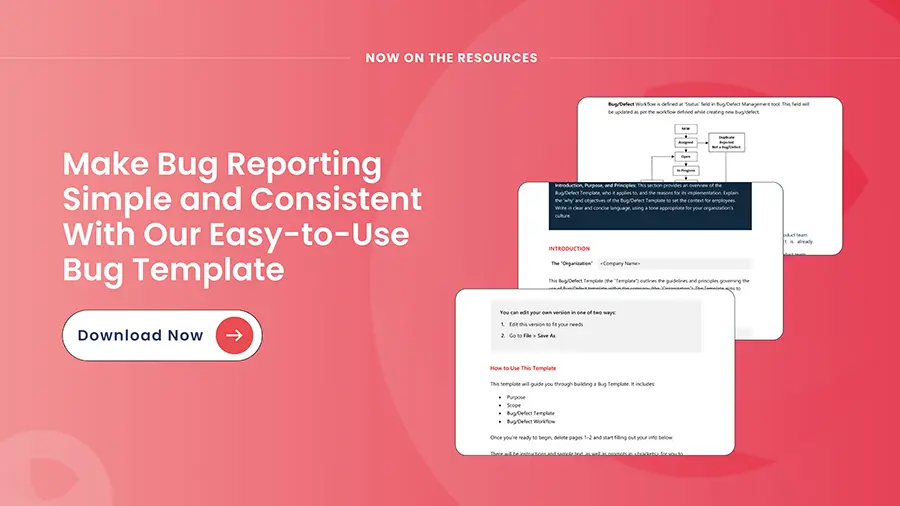Within the realm of Agile software development practices, Test-Driven Development (TDD) stands as a cornerstone. This method works on the simple principle of developing code that should pass the desired tests. At the heart of TDD lies its principle objective: the unwavering prioritization of software testing throughout the development journey.
TDD is a valuable strategy throughout the software development life cycle, from unit testing to deployment, promoting efficient development and mitigating issues such as “gold plating,” where unnecessary features are added based on developer expectations rather than customer needs.
Importance of TDD in Modern Development:
Test-Driven Development offers several benefits that contribute to the overall improvement of software quality and development efficiency:
- Early Detection of Coupling: TDD assists developers in designing and automating tests to ensure the functionality of the code. By employing object-oriented design principles, developers create code that is less coupled and easier to test. This early detection of coupling enhances code quality and simplifies the testing process.
Coupling in software development measures how modules depend on each other. Tight coupling makes the system inflexible and harder to maintain, while early detection and addressing of coupling issues promote modular, maintainable code, reducing complexity and easing future modifications.
- Reduced Defects and Faster Development: Developers only write code that has been verified through testing, this promotes clean and simple code. This not only reduces defects but also accelerates the development process. TDD’s focus on automated regression testing further ensures that existing functionality is not compromised with each code modification.
- Improved Code Readability and Manageability: TDD contributes to code readability and manageability by encouraging developers to write modular and well-structured code. The iterative nature of TDD, with its emphasis on small, verified increments of code, results in codebases that are easier to understand and maintain.
- Automated Regression Testing: TDD integrates automated regression testing into the development process, allowing for quick identification of potential issues when changes are made. This automated testing ensures that new code additions do not inadvertently break existing functionality.
- Enhanced Software Quality: By systematically addressing requirements through testing, TDD significantly improves the overall quality of the codebase. The focus on meeting specific test criteria ensures that the software behaves as intended.
Steps of Test-Driven Development (TDD):
TDD follows a structured process, often referred to as the Red-Green-Refactoring cycle, with the following steps:
- Think & Write Test Cases:
- Define test cases that align with project requirements and focus on user experience and interaction with applications and systems.
- Tests should be created before any code is developed, focusing on user
- Red – Failure of Test Case:
- Execute the test case, which should fail initially as there is no code written.
- This phase ensures the effectiveness of the automated test framework.
- Green – Code to Pass Test:
- Write the minimum code necessary to make the failing test pass.
- The objective is to meet the specific requirements outlined in the test case.
- Green – Ensure All Old Test Cases Pass:
- Verify that existing test cases, developed in previous iterations, still pass.
- This ensures that new code additions do not introduce regressions.
- Refactor the Code:
- Improve and optimize the code for clarity, removing any redundancy.
- Refactoring ensures that the code remains functional, enhancing its maintainability.
- Repeat the Cycle:
- Repeat the process for each new functionality or modification, continuously building on the existing codebase.
Looking for a Right Test Automation Framework
for Your Organization?
We can help
Best Practices for Successful Test-Driven Development (TDD) Implementation
Implementing Test-Driven Development (TDD) effectively involves adhering to best practices that ensure the process is streamlined, productive, and maintains code quality. Here are some key TDD practices to follow in TDD projects:
- Simplify Functional Aspects:
- Focus on one functionality or feature at a time to maintain simplicity.
- Collaborate with the entire team to ensure comprehensive coverage of the desired functionality in the test case.
- Conduct a thorough review of the test case for correctness and completeness, as it acts as the guiding force for development.
- Goal-Centric Focus:
- Understand the points where the code needs to be invoked and structure the test suite accordingly.
- Adhere to standard naming conventions for test cases, ensuring clarity about the intended functionality.
- Make test cases easily comprehensible for future developers as functionality evolves through iterations.
- Practising Code Economy:
- Develop code with the minimal necessary elements to satisfy the test case, aligning with TDD principles.
- Minimize the likelihood of defects and simplify the review and testing processes.
- Ensure the code remains understandable while allowing for potential future enhancements.
- Iterative Testing:
- Conduct testing before coding, after coding, and post code refactoring.
- Reinforce confidence that no code is broken at any stage of the development.
- During refactoring, verify that the new code is both maintainable and consistent with coding standards.
- Uphold Code Integrity:
- Utilize version control tools for code check-ins and check-outs, especially in collaborative development scenarios.
- Employ continuous integration tools like Jenkins to prevent code merging issues when multiple developers contribute.
- Application Insight:
- Limit coding in TDD to be effective without disrupting existing functionality.
- Strive for new code to pass the test case on the initial run.
- Maintain comprehensive system documentation, including a repository of test cases, and involve team members with strong application knowledge for successful project execution.
- Strategic TDD Implementation:
- Apply TDD judiciously, particularly in scenarios where developments can be swiftly tested.
- Avoid using TDD for testing that is protracted or intricate, as it may undermine the foundational principles of TDD.
Test-Driven Development (TDD): A Paradigm Shift Towards Software Quality Excellence
Test-Driven Development (TDD) is like building with a plan. Instead of jumping into writing code right away, you first create a set of tests that describe what you want your code to do. These tests act like a roadmap for your coding adventure. TDD makes sure that testing is a top priority at every step of creating software, ensuring a solid foundation for your project.
Incorporating TDD into the software development paradigm is not merely an operational shift; it constitutes a paradigm shift—a transformation of mindset. It’s a strong dedication to ensuring top-notch software quality. By adopting this mindset and making quality the driving force behind every choice, software development can reach new heights of excellence. The result is software that not only meets but exceeds user expectations.
Enhops works with clients across the globe to improve their test automation framework by testing managed and implementation services, team extension services, and co-innovating with our partners in areas of test automation, test advisory and consulting, test managed services, and more. Our team of automation specialists are huge advocate and practitioners of Test Driven Development (TDD). It can be implemented in any environment that supports unit testing. We specialize in implementing TDD across various languages (Java, Javascript, Python, C#, Ruby) with widely used web and mobile development frameworks.
Learn more about our Quality Assurance services or reach out to us today at marketing@enhops.com



